#canine dentition
Explore tagged Tumblr posts
Text
I see a lot of people drawing young Kain as this very, very handsome man and then there's mine. He's a little goblin full of mischief and if you flick him you'd break all the bones in his body
#legacy of kain#lok#my stupid thoughts#he also has braces#Vorador put them on his teeth because his canines were fucking his whole dentition#but that's a sorry for another time#he's also like. the Schrödinger cat of the brain#is he a genius or a dumbass? nobody knows...........#anyway#I'm so happy to see all the different versions of him#to see people drawing him and thinking of him a different way than mine! it's fun it's fun sksk#I need to draw him again#I need to draw young Sebastian as well#I need people to see that disastrous duo#they hate each other and also care about each other with the same burning passion sksksksk
20 notes
·
View notes
Text

Myrna
#anthro#canine#creature design#dentition#furry#ink#ink brush#marker art#original art#pen art#traditional art#dog#dogs
3 notes
·
View notes
Text
i do not know how to talk to people
#fo the record#i do not get teeth dentitions either!! i cannot distinguish between incisors and canines in photos
0 notes
Text
Observations on Kryptonians:
Their Biology, Behavior and its Dynamic with Beauty
An anecdotal entry by Bruce T. Wayne, regarding his experiences with the Kryptonian People.
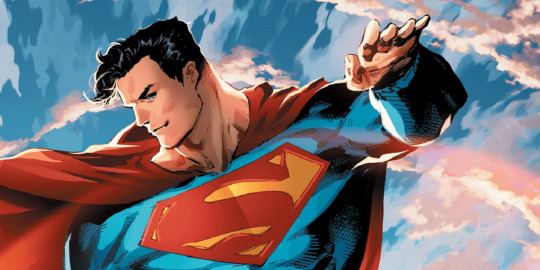
Over the course of the last century, Earth and Humanity has become aware that not only are we not alone in our universe- but that we are not alone on our world. At an undisclosed moment in our history, our homeworld became a refuge for the last children of Krypton, a world that was lost to unknown disaster.
Kryptonians are mysterious and alien, a recipe for rejection and prejudice on this planet. Not only this, but they have exceptional powers, which lure our worst impulses of greed and exploitation. We have not always treated them with kindness.
Despite our own lack of humanity, the most notable Kryptonians of our society continue to share their unique gifts and perspectives, choosing to help wherever they can.
As a Jewish man, and a Father, the legacy of the Kryptonian people, both in entrusting our world with their children, but with it, their future in the face of diaspora, humbles me.
I would like to offer my voice of support to our kin from beyond the stars. I have some personal experience with Kryptonians, and will attempt to demystify their habits and nature, to present them to you not as strangers from the skies, but as part of the infinite diversity of our world.
Not to be feared, not be used, but to be welcomed.
ברוכים הבאים לבית שלנו

Caveat on Kryptonian Powers
Most discussions of Kryptonian biology begin and typically conclude with a long list of the powers typical to Kryptonians. These powers are considerable, but are generally used to justify how they are treated. There is no value in me lingering on this much-speculated aspect of our Kryptonian kin.
Instead, I would like to discuss the lesser known traits that I have found to be personally charming.
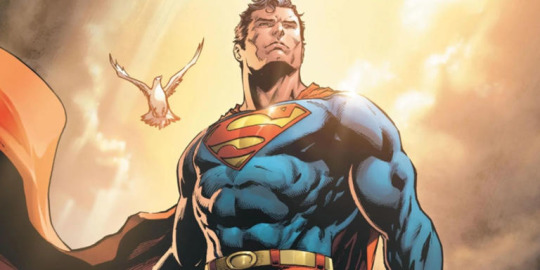
Diurnalism and Sun-seeking
Kryptonians are naturally diurnal by nature, and are drawn to sunlight. When relaxed, they enjoy basking in our sun's warmth and when injured, or unwell, should rest in either natural sunlight, or be placed near a sunlamp.
Many Kryptonians display a tanned or dark-skinned complexion, which I found initially counterintuitive since it indicates protective melanin in Humans. In a Kryptonian, this coloration is actually indicative of stored solar radiation. In layman's terms, it's a sign of good health in your local Kryptonian.
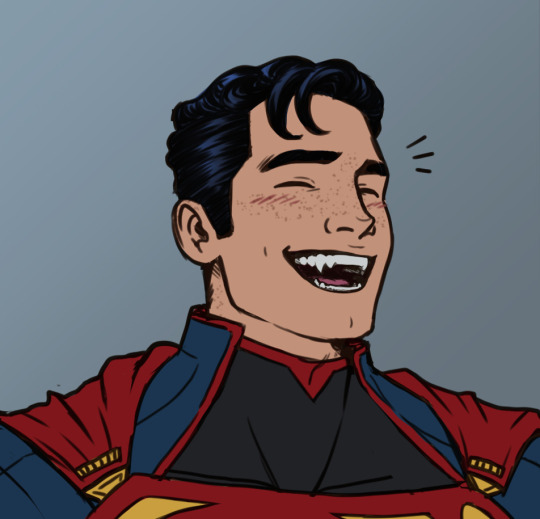
(Art credit to @domnorian, please support the original work here, it is used here as an example)
Dentition and Diet
The intense demands of the Kryptonian body are supported by an incredibly high metabolism. Although they are primarily sustained by solar radiation, they can and do display a remarkable appetite. This energy is readily burned off by their bodies, so it should be considered offensive to shame or draw attention to how hungry a Kryptonian may appear to a Human.
Instead, attention should be paid to the variety of their diet. I have concerns that Kryptonian nutrition is not necessarily met by traditional human foods, and believe that supplements of various metals, sillica and crystalized minerals may be of great use to them. Further research is indicated, but consider they may not be fully satisfied.
This viewpoint is supported by the Kryptonian dentition, which features a diminutive but handsome set of fangs. As this is one of the more readily visible distinguishing features, some Kryptonians experience self-consciousness when smiling.
If it is of comfort to any Kryptonians reading this, Humans enjoy 'teefies' and like to remark upon the canine teeth of our companion cats and dogs. We find it 'cute'.
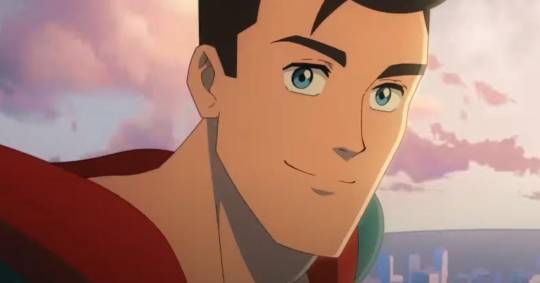
Ocular Notes
It has come to my attention that Kryptonian vision is more specialized for use during flight. It has great telescopic capacity, amongst its other various modes, but this can put them at a disadvantage in our society. Being so far-sighted, Kryptonians may struggle to read letters, smaller signs and newspapers without assistance.
If you see a Kryptonian puzzling over a piece of paper, and holding it at arms' length, any offers to help should be gently made. However, Kryptonians are notoriously friendly and inclined to offer help as much as receive it. You may well make a new best friend. In fact you probably will. Statistically.
A smaller note is that Kryptonian eyes- on account of the multiple facets to their vision -all appear to be a unique type of blue. This particular shade is potentially a generative emission of scattered sunlight, though it would require more detailed research and a far longer examination on my part to confirm.

They Purr
Yes, it is true. Kryptonians purr. It is a delight to listen to.
From my observations it seems readily triggered by the presence of children, or a desire to comfort others. As well as by their own contentment, whether physical, emotional and often both.
The frequency of the oscillations seem to differ between the two circumstances, supporting my current theory that this purring is both a form of communication, but separately resonant to encourage bone growth and soft tissue repair in the sick and injured.
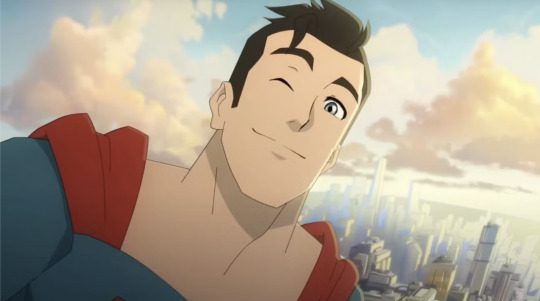
Reproduction and Courtship
Having not conducted a relationship with a Kryptonian, I speak from a limited capacity of research. That said, to Humans looking to court Kryptonians, they appear to be receptive to forms of lip contact, and saliva exchange.
Further erogenous zones are speculative, but there is marked sensitivity along the length of the throat and just below the occipital bone.
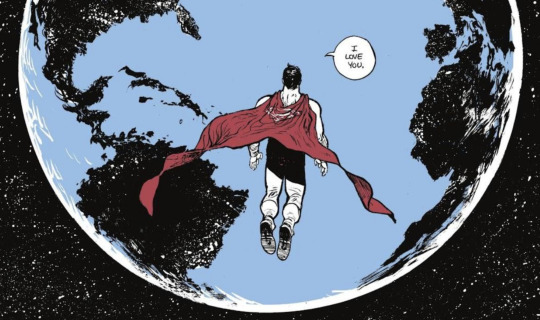
Love
I put it to you that Kryptonians are not powerful - they are uniquely vulnerable. An endangered culture and people who have shown us compassion alone. They deserve our protection and understanding.
This is the only home they have ever known. They are not strangers from the stars, they are our friends sharing the same sunlight.
They love us. We should love them in return.
B.T.W
PS. @official-clark-kent I am no reporter, but I did enjoy trying my hand at a small thinkpiece. Perhaps we could go fishing sometime?
265 notes
·
View notes
Text


Kinda went crazy on dragon teeth anatomy! Biology geeking out under the cut
Bogsneak dragons are very crocodilian in appearance, and the fact that they prefer swampy environments definitely lends to this. Out of all the crocodilians, I’d say they resemble alligators the most due to the thicker, rounded snout, and the way the upper teeth poke out from their jaws; Crocodiles visually show both upper and lower teeth when the mouth is closed, while alligators only show upper teeth. Their teeth structure is like alligators; they’d possess around 74-80 sturdy, razor-sharp teeth specialized for vice-gripping their prey. Unlike alligators, Bogsneaks possess a forked tongue. It reminds me very much of a Komodo dragon's tongue, and I imagine they would use it to taste air as well. Bogsneaks eat meat and plants. Alligators are carnivores, but they have also been reported to eat various fruits as well!
Coatls are easy in one sense; they’re obviously snake dragons, but the question is… what snake? I’d argue that they’re visually similar to cobras, with the feather crest resembling a cobra hood, the head being vaguely cobra-shaped, and the fangs poking out of their mouth (cobras have permanently erect fangs). There’s two big differences here though; for one, Coatls are not said to possess venom. For another, Coatls only eat seafood, while cobras eat terrestrial and semi-aquatic prey. However, there are several snakes in the Elapidae family (cobra family) that eat seafood… sea snakes! In fact, there is one type of sea snake that is nonvenomous, but it only eats fish eggs; Coatls would have a diet more similar to other sea snakes, which eat fish, eels, marine gastropods, and other marine invertebrates. Coatl dentition would be a mix of cobras and sea snakes; they’d have the big fangs in the front with several smaller teeth behind the fangs on the upper jaw.
Fae dragons are insectivorous, and I think they’re most similar to geckos in terms of diet and dentition, as geckos are also insectivores. Faes would have rows of small, sharp, conical teeth on both the upper and lower jaws. I specifically researched geckos for Fae dragons, but if you wanted to go the more mammalian route, I’d say shrews are the best fit.
Fathom dragons are an interesting case. They have external ears like a pinniped, echolocate underwater like cetaceans, have amphibious gills, and travel in pods. I’d say they’re dentition is a mix of sea lions and orcas. They’d have the big canines that sea lions have, but the rest of their teeth would be more similar to orcas; interlocking and conical. However, Fathom dragons are omnivorous and eat plants and seafood; sea lions and orcas are both purely carnivorous and have not been seen eating plant matter of any kind. The plant part of their diet I think would be similar to manatees, which graze on seagrasses and other aquatic plants.
Like Bogsneaks, Guardian dragons look quite crocodilian in their tooth structure. I’d say they lean more towards crocodiles due to their teeth poking from both the upper and lower jaws when the mouth is closed. They’d also have big canines similar to leopard seals. Guardians will eat just about anything; plants, flesh or bugs. Crocodiles mainly eat insects when they’re juveniles, slowly transitioning to bigger prey as they age. Like alligators, they also occasionally consume fruit.
Imperial dragons always looked very fox-like to me, and like foxes they have a diverse diet. Foxes eat mammals, birds, insects, fruits, grains and veggies. Some red foxes have even been observed fishing! That ticks off all the boxes for the Imperial diet. They’d have dentition like a canid as well, with pronounced carnassials for shearing and canines for gripping prey.
There’s a few things to take note of when it comes to Mirrors: they hunt in packs, they run their prey down, they are carnivorous and they originate from The Abiding Boneyard - an arid wasteland. I’d say they’re opportunistic predators, and will scavenge as well as hunt. Their diet and tooth structure would be similar to that of hyenas, and they’d possess bone-crushing premolars that spotted hyenas are well known for. Spotted hyenas also hunt in packs, and are known for their endurance when they hunt, chasing down prey until their quarry is exhausted; a perfect match-up for Mirrors. Their canines would be pointier than a spotted hyenas, and would be more similar to a jackal or wolf in appearance.
Nocturnes are based on bats, which is apparent based on their diet and overall appearance. I think their dentition would be most similar to the spectral bat, the largest carnivorous bat in the world. It consumes birds and rodents as well as insects, which perfectly lines up with Nocturnes!
257 notes
·
View notes
Text
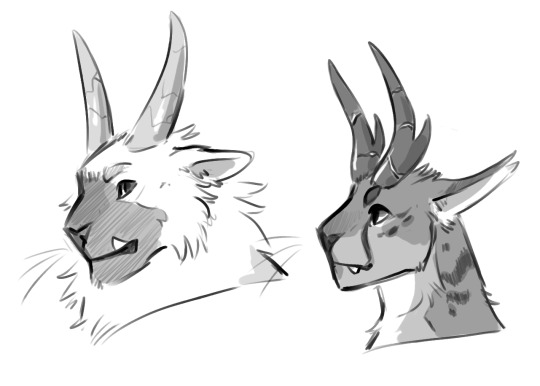
Been thinking of some cousins for the Far Frozen yetis for some time now, specifically spirits of similar origins that have embodied different elemental cores. This fella on the right has a fire core.
More info below the cut
I don't have a set name yet for these guys or where they're from (though I'm considering something along the lines of "Distant Flames", or "Endless Plains"). I wanted to draw how I imagine their facial features differ from the Far Frozen yetis.
The fire core cousins most prominently differ in their coats. While the Far Frozen yetis have dense, usually white coats (with a common prevalence of point markings) their fire core cousins favor darker pelts with a common prevalence of spots and stripes.
In addition, the coats of a fire core yeti are much sleeker, particularly around the cheeks and neck. They possess longer, tufted ears, and typically have more narrow facial features.
While it is more common for Far Frozen yetis to have protruding lower canines, it is the opposite for their fire core cousins (though a variety in dentition is recognized throughout both demographics).
While the ornamentations on their skulls appear similar in shape, the icy horns that a Far Frozen yeti possess are very different from the molten antlers of their fire core cousins.
From a young age, horns start to bud on Far Frozen yetis, growing slowly throughout their existence. These horns may be shaved, trimmed, altered, or even occasionally repaired through external means, but otherwise will not deviate much from their intended shape, and do not drop unless damaged (by poor health or injury).
In contrast, the ornamentations crowning the skulls of fire core yetis are antlers. They do not grow at all until adolescence, and will shed and regrow throughout their existence, often changing in size and shape as they do so. Rather than being made of ice, the structure of a fire core yeti's antlers bears a striking resemblance to obsidian, with fiery veins woven throughout. When a fire core yeti drops their antlers, the spot left behind resembles magma, hardening and darkening overtime as their new antlers grow.
#danny phantom#far frozen#far frozen yetis#yetis#danny phantom ocs#dogart#danny phantom art#ghosts#phanart
254 notes
·
View notes
Text
kensy’s (smutty) synonym bible
tw: nsfw
hi there <3
i often find myself googling synonym for despite uhhh knowing words (i promise) so i decided to make a cheat sheet masterlist for my little goldfish brain. might as well post it
most commonly i google dialogue tags so let’s start with that
smutty dialogue tags
says hisses keens croons seethes sighs
gasps bites out grits out keys out spits
growls snarls cries spits drawls slurs
moans groans grunts huffs babbles
praises purrs soothes coos giggles lulls
thanks wails whimpers whines breathes
stammers stutters squeaks lilts whispers
teases mocks begs challenges pleads
snaps orders commands demands tells
descriptors for:
general touch
ghost (across/over/against) caress skirt
drag grab pull push clutch grip
hold knead tease roll (over) rock (against)
skim press nudge bump (together)
play with smooth (over) ride (over, down)
trace track graze thumb tease toy with
handjobs
the giver
squeeze pulse drag stroke slick wet
messy sloppy tight hot circle of (their) hand
glide strip (over) twist palm
the recipient
buck lift (their) hips roll rock thrust cant
fuck twitch tick jump (hips) kick hump
blowjobs
spit drool choke gag suck pull swallow
slurp heat of (their) mouth back of (their) throat
track (a vein, the underside of the dick, whatever)
drip lave lick tongue flick slack (jaw)
fuck facefuck throatfuck
prep (i write anal lol but do whatever)
slip slide press push wiggle (in) open up
work open ease open ease inside
about the fingers
crook scissor apart/together search (iykyk ;))
hook pump (in and out) thrust finger
seek roll press against angle curl
adding more
slides in a second finger/digit/next to the first
pulls (their) finger out and reenters, twice as thick
works/eases/opens up to two/three/etc
note: the prostate is a hook down in doggy style and a hook up in missionary, similarly to the g-spot (i google this shit all the time LOOOOL)
kissing
lips lock lips meet lips join press together
slick slide of hot wet needy open-mouthed
lips part pant/moan/dialogue into (their) mouth
swallows a moan from (their) partner’s kiss
bite/suck the lower lip lick suck taste pull
french licks the back of (their) partner’s teeth
licks/laps/laves into (their) partner’s mouth
x into their kiss (ex. whine, sigh whatever)
x a kiss to…/x kisses to…
press drop touch stamp pepper litter
smack place push pin tack feather
lay scatter sprinkle spot leave
teeth
grit clench grind tight teeth/fangs/canines
set (their) jaw
sharp
fangs canines pierce sink (bite) red with…
anteriors (front six teeth canine to canine, top and bottom)
dogtooth incisors upper/lower bloodied
six neat holes in a half-moon
general
ivories teeth bite dentition white straight
crooked braced aligned misaligned
the act of biting
sink teeth into clamp down on pierce drag
tear into nibble nip clip with (their) teeth
clip teeth together
breathing
breath hitch sigh huff breathe hiss puff
seethe exhale inhale pant gasp purr
pulls/takes/sucks in a breath breath steals out
punched-out fucked-out clipped (sigh)
desperation
needy keening crying begging pleading
aching throbbing pulsing hammering
dizzy (with want/need/blood loss (hi poolverine))
eager shameless pitiful pathetic hungry
dying to yearning for so bad/much lawless
colors
red
rouge crimson flush blush cherry cerise
ruby scarlet flame redden/get redder
rose wine angry ruddy full-blooded bloody
pink
flush blush tulip bloom rosy french pink
baby pink pastel pink florid peachy
blue
gunmetal steel blue cerulean mirror blue
ice cold pale sky indigo ocean
brown
tawny taupe amber auburn chocolate
tan leather
green
olive jade emerald forest grass
lashes
flutter flit bat puppy eyes skip
lashes flutter through a roll of (their) eyes
figures
smooth expanse of (back, stomach)
silky line of (back, whatever) arch bow
tense pull tight relax slack go limp
cords of (their) thighs burn (good for missionary)
tan dark contrast sleek curve
i’ll add to this :) bye tumblr
47 notes
·
View notes
Text
The Early Rodentocene: 5 million years post-establishment

Hamster Hunter Rise: Squeasels of the Early Rodentocene
In the days of the Early Rodentocene, the hammibals reigned supreme as the planets' primary top predators. Conservative in form, they were anatomically simply larger hamsters, but with sharper teeth and claws, more forward-facing eyes, and an appetite for smaller hamster species--or even their own.
Yet, in the forests and grasslands of Nodera, Easaterra and Westerna, new challengers have emerged that in due time will spell an end to their monopoly of top predator niches. These bushy-tailed relatives of the arboreal peachpitters have, similarly, developed a taste for meat, and begun supplementing their diet first with scavenged carcasses and unattended pups left in nests, before slowly graduating to a more carnivorous diet, preying upon adults of other, smaller hamster species.
Known as the squeasels, these long-bodied hunters would slowly rise in prominence throughout the Early Temperocene, but not quite rivalling the hammibals just yet. However, by this point, they had begun evolving a unique trait that would ultimately give them the upper hand over the hammibals as of the Middle Rodentocene: a set of unique dentition, with sharp pointed incisors, forward-shifted first molars used for shearing off chunks of meat from carcasses, and a wider jaw gape that allowed them to deliver suffocating bites to the throats of prey. Despite their lack of canine teeth, as all rodents do, they modified their pre-existing teeth in order to perform a similar function in attacking, killing, and dismembering their quarry.
The grassland squoat (Sciurumustelamys brevipus) is a typical example of the squeasels, with short legs and a long flexible body that allow it to chase small burrowers down their tunnels and drag them back out to finish them off in the open. Fierce and tenacious hunters, they can even tackle the gouties from time to time, leaping onto the larger herbivores with the goal of inflicting a few deep wounds before retreating. Staying close by and tracking its prey, it strikes again briefly then runs off again each time its prey stops to rest and recover, playing the long game of patience until at last its victim falls from blood loss and exhaustion.
With a wide and varied diet, the squoat also sometimes takes on quarry closer on the family tree: its relatives the peachpitters. These arboreal frugivores are naive and complacent creatures, unfamiliar with predation and unchallenged in the trees, not even bothering to defend their numerous young once they have weaned. Eventually, some opportunistic squoats, seeing the abundance of peachpitters in the trees, eventually started climbing up trunks from time to time to seize an unwary youngster and haul it off to eat. Their close resemblance to the peachpitters also grant it an advantage, as it can sneak among them to hunt undeterred.
Deception as a hunting strategy would be of greater importance to another squeasel species, the long-tailed skab (Procanimus longicaudus). This species, preferring to lie in wait and allow its prey to come close to it instead, uses the twitching of the pale, conspicuous tip of its long, flexible tail as well as very convincing insect-like chirps to draw the attention of small insectivorous prey such as jermas and shrewbils. Baited into approaching within striking distance, the camouflaged skab then pounces, restrains its prey with grasping forepaws and delivers a choking bite to its prey's neck.
More efficient killers than the hammibals, which simply seized their victims and began gnawing away at the struggling and still-living prey, the squeasels would eventually gain the upper hand over their more crude and messy rivals, gradually usurping their monopoly as top predator in the grasslands. But the turning point would be the increasing size of the gouties' descendants, growing larger and larger both to better protect themselves from predators and more efficiently proccess plant matter, which eventually would give rise to the hamtelopes and the cavybaras: prey that were too large for the hammibals to tackle, but the squeasels were able to overpower, even at sizes greater than their own. In time, the squeasels too would become larger predators as well in an arms race with the gouties and its descendants, eventually diverging into multiple predator clades in the Middle Rodentocene. The hammibals would be left behind as small-scale mesopredators, but the squeasels would flourish, with the long-tailed skab giving rise to the scabbers, some of which in the Temperocene become large-scale predators convergent with the zingos, on the small island continent of Mesoterra. The squoat, on the other hand, would diverge into two lineages by the time of the Middle Rodentocene: the ground-dwelling ferrats and the arboreal bossums. From the ferrats would emerge the stocky-bodied, omnivorous badgebears, the feline-like carnohams, and the semi-aquatic searets, the latter of which would eventually become the large marine predators known as the leviahams. The bossums, meanwhile, would remain as arboreal predators, becoming the treegers, the tigerillas and, eventually, the knuckle-walking foldpaws: sworn enemy of the Temperocene's sophont species.
---------
53 notes
·
View notes
Text

Arctic Odontocetes
And here's the three other Icelandic whales poster illustrations. All true Arctic species, roaming the frigid water of the high north. While Atlantic white-sided dolphins can occasionally be spotted along European shores, Narwhal and Belugas roam the true ice seas.
Narwhals are famous for their rather striking dentition: the huge, up to 3 meter long tusk, is hard to miss. It's actually their left canine tooth - every once in a while the right canine erupts too, making for a double-tusker. It's usually only males who are so adorned, as only a very small number of females (15%) bear tusks.
The exact function of the tusk is still debated: originally thought to be a simple weapon, now it is mostly thought to serve as a secondary sexual characteristic, inducing status in the bearer. The bigger the tooth, the sexier the man. However, researchers suspect they may have many more functions. Through the tusk run thousands of nerves which enable Narwhals to sense differences in water temperature and salinity. On top of that tusks have been observed to aid hunting and social interactions between males, and perhaps more. And the occasional Narwhal has been found with a broken tusk embedded in their cheek. So perhaps some good ole fashioned fighting happens after all, though no one has ever observed it happening.
The tuskless females survive just fine without them though and often live to be even older than males (up to 115 years!), so the advantages can't be that critical. Nevertheless it's fascinating to think about. Somewhere out there in the ice cold seas where we would freeze to death in an instant, swim whales - fellow mammals - sensing the waters with their 3 meter long canine tooth, occasionally slapping a fish unconscious. A wholly alien experience lived by an animal not so essentially different from us.
Atlantic white-sided dolphins may be far less mysterious, but nevertheless amongst my favourite delphinids. They've such beautiful markings. And the beluga... no doubt well known too as living marshmallows. I must say that youtube videos of their melons and fatty flabs being wobbled is great watching material.
Also - the "Whales of Iceland" poster is officially up for sale! You can nab one at Pappyr's website here. Not sponsored or anything, I just think the poster turned out super neat.
#illustrations#narhwal#monodon monoceros#beluga#beluga whale#delphinapterus leucas#atlantic white-sided dolphin#dolphin#lagenorhynchus acutus#toothed whale#odontocete#digital art#sometimes i just can't think of good captions for art#this is one of them#hope it comes across better than it seems in my head#because narwhal tusks are such a cool subject!
66 notes
·
View notes
Note
Weird vampire physiology and society questions, interspersed with assorted random musings!
How does their dentition differ from a human’s? Are the canines just longer and sharper, or are they thicker/larger too? Are the bottom ones similarly shaped to the top ones? Do they bite (for feeding, or for combat) with just the top ones, or all four?
Do their eye colours vary, and if so, by how much? Do some vampires have more pinkish or even purple eyes? What about orange or yellow? Are their pupils round like a human’s and get larger to adjust to light (more similar to a human), or slit more like a cat’s and get rounder to adjust to light (more adapted to the dark)? Or something else? Do their pupils reflect light like a cat’s (another dark vision adaptation)?
How would the perfect healing thing change for a vampire born with a physical genetic disability? For instance, a vampire born without a limb, or blind, or with a muscular disorder. My guess is that the vampire returns to whatever “base state” is indicated by their genetics. How does that affect the vampire’s standing in society? Since vampires heal from all injury, I’m betting there’s even more ableism than there is amongst humans. Additionally, how rare is kane’s lack of persuasion? I’m sure he’s not the only one, but based on comments in the story, it seemed like having no persuasion at all was exceedingly rare.
On a similar note, do vampires have allergies, since that’s a case of one’s immune system overreacting to something? Do vampires with allergies just get extra hungry when the wrong flowers bloom because their bodies keep needing to “heal” from random environmental factors?
What are the blood types of the human characters in k&j? Are there blood types that are generally considered “tastier” in vampire society? (Of course there would be variation, after all, not every human thinks truffle mushrooms taste all that great, but we all agree that they’re more expensive and fancier.) Kane regularly mentions jim as being especially tasty, would most vampires agree with him?
Since vampires have more sensitive noses, do they (generally) like things like incense, perfume, scented candles, etc, or do they absolutely hate it? I would assume they’d want weaker scents than humans usually do, but it would also be much easier for one to notice a funky smell in a room and want to cover it up. (Also, given how many human candle scents are based on food, especially fruit and pastries, would vampires use blood as a scent?)
Feel free to answer or ignore as many of these as you want, i love your writing and find the setting fascinating and want to know more about it
dentition - longer and sharper, prob a bit thicker but not too much. bottom teeth are basically normal for a human, maybe a bit sharper canines but no added length. they bite with the top teeth for feeding.
eye colors vary very little. they have bright red eyes, and while exact shade can have slight differences, there won't be much. eyes are round like a human's and reflect light like a cat's, as they possess a tapetum lucidum. (tapetum lucidum is my fave part of the eye, i dissected a cow eyeball in biopsych class and cows have em too, they look super weird up close and out of the eye! i would... like to dissect a vampire eyeball...)
idk the blood types of my human characters... i actually may have mentioned it before but forgot... blood type won't really be too much of a determining factor at large, though certain humans or blood types might be tastier to individual vampires, but tastes vary greatly so there's no consensus. most of kane's family (ex. anton) would agree abt jim being especially tasty, but not all vampires.
liking fragrances or not would vary from vampire to vampire. weaker scents are indeed common. kane enjoys scented candles. blood is not too common a fragrance (though it does exist), and human food smells gross to vampires so it's never used. things like florals and pine and lavender and other natural non-food scents are used, as well as some things vampires can smell that humans wouldn't even be able to.
23 notes
·
View notes
Text

The Inland Sphynx (Homopantera terra) is a large sentient of the morphic genus Homopantera, native New Petra. It has a lean, broad-chested body; a proportioned humanoid head; round ears; and a dark, hairy tuft at the tip of its tail. It is not sexually dimorphic. The Inland Sphynx lives alone, but socialises.
Etymology The word 'Sphynx' is a Greek corruption of the Egyptian name 'shesepankh', which meant 'living image'.
Taxonomy Homopantera terra is the current designation in use in New Petra. Other species are Homopantera maritimum (Coastal Sphynx), Homopantera androphagon (Manticore) and Homopantera ornata (Lamasu). Some have proposed the alternative name: Homopantera civitas instead of terra.
Description The Inland Sphynx is a lean, broad-chested like-felid with a humanoid head, a reduced neck, and round furred ears. The base of the tail and the area behind the forelimbs are densely feathered.
The fur varies in colour from light buff to silvery grey, yellowish red, and dark brown. The colours of the underparts are generally lighter. Both male and female Inland Sphynx retain spots into adulthood. Feather colours are generally bright, with purples, reds, oranges and metallics being common. Hair ranges from any natural human colour, though is frequently dyed to match the feathers. The tail of all Inland Sphynx ends in a dark, hairy tuft that conceals a hard 'spur' that is formed from the final, fused sections of tail bone.
Its skull is very similar to that of a standard human, though much larger. Faces are frequently oval with pronounced, elevated, and arched eyebrows, large almond-shaped eyes, well-defined cheeks, full lips and a prominent, pointed chin. Males frequently cultivate a beard. Canines are only slightly more developed than a human's, and dentition supports omnivorous eating.
Large paws have fully retractable claws and are notably agile compared to other Homopantera, enabling limited tool use and more elaborate grooming. Instead of a dew claw, they have a thumb, though the size of their digits limits precise actions.
The average Inland Sphynx is approximately 170cm long with a tail length of 80 cm, and a weight of 120 kilos. Females are only slightly smaller than males.
Distribution and habitat The Inland Sphynx is found only in New Petra and does not travel. As of this writing, around fifty individuals are registered with the Bureau of Population.
Behaviour and ecology Inland Sphynx spend much of their time resting; they are inactive for about sixteen hours per day. Although they can be active at any time, their activity generally peaks after noon with a period of socialising, grooming, and then activity in their chosen profession.
While they are solitary amongst their own species they commonly live close by other sentients and have reciprocal arrangements for grooming, entertainment, and health related reasons.
The Inland Sphynx is a generalist omnivore and prefers cooked food. It is a poor hunter unless trained to do so, as it's needs are generally met through the society that it functions in. When it is required to fend for itself, it generally hunts by ambush from a raised platform or tree - it cannot fly, but is capable of fully extending the feathers around it's forelimbs to allow a controlled fall. They prefer small game, rich fruits, and enjoy wine and other fermented substances.
Reproduction is limited and sporadic, resulting in a large egg that requires brooding for 110 days. Inland Sphynx who want to have offspring have access to artificial incubators in New Petra. Cubs are somewhat altricial, despite being born with fur, and must be parented for four years before reaching adult size. They make decent parents despite being generally solitary, cubs receive schooling along side other youth in New Petra.
Morphic ecology notes
All Homopantera are capable of shifting species according to adaptive pressure. The Inland Sphynx is particularly prone to shifting to a Coastal Sphynx body and lifestyle should they engage in any of the following behaviours:
Eating sentients
Engaging in blood sports
Spending time with Coastal Sphynx
Ceasing intellectual pursuits
Engaging in anti-social behaviour
Inland Sphynx can rarely shift to a Lamasu under the following situations:
Eating predators
Developing a martial outlook
Developing an obsession with astronomy and philosophy
Behaving in an ascetic manner
Adhering to a strict set of behavioural rules
Inland Sphynx cannot become Manticores unless they go through a Coastal Sphynx transformation first.
Social notes
Inland Sphynx ornament and decorate themselves when they have the assistance of humans to do so. They maintain themselves neatly, and are frequently in the University District. Those who cannot maintain academic pursuits have the physical strength to do more mundane jobs such as dock workers or pull carts. They generally avoid roles such as scouts or guards to avoid morphic shifting.
Generally occupations chosen by Inland Sphynx include various academic focuses, due to their excellent memory. They favour writing, mathematics, history and stories. They all admire riddles, and can develop obsessive behaviours around them.
Most Inland Sphynx speak several languages, and are gregarious as long as they can return to their own home, alone, and recharge in peace.
22 notes
·
View notes
Text
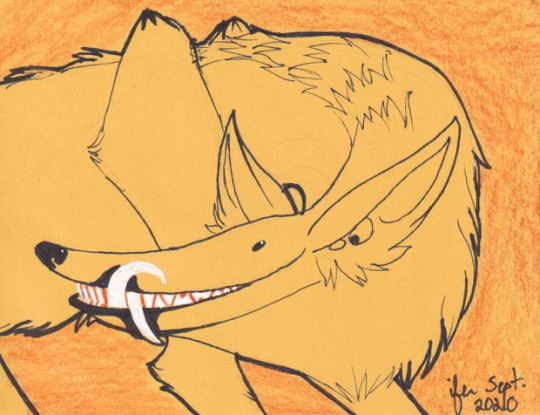
Wily
#creature#creature design#dentition#teeth#pencil crayon#pencil crayon art#mixed media#pen art#marker art#coloured pencil#coloured pencil art#art#original art#ink brush#original#traditional art#canine
2 notes
·
View notes
Text
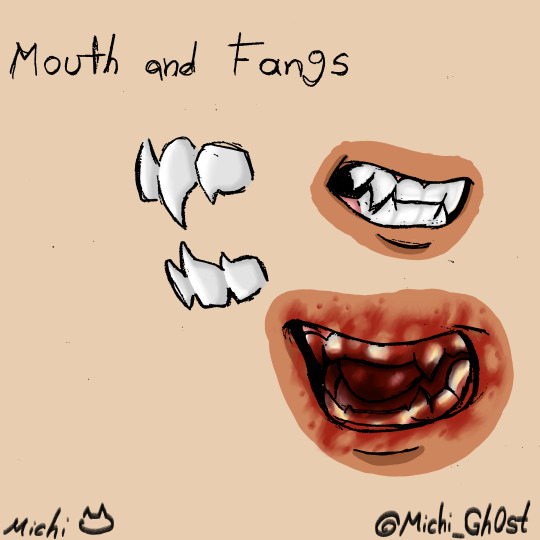
Werebeetle Anatomy Study: Mouth (Warning: Blood.) The second and most painful symptom of the DNA and beetle code linkage is teeth. As shown in the diagram, the shape of fangs and molars become sharper, assimilating the shape of canine teeth.
It is categorized as the most painful, since to acquire these teeth, they will replace the entire dentition of the host. Pushing in its entirety all the old teeth so that they can come out. Obviously, these teeth being a little sharper can cause extreme pain and discomfort. The use of fangs can usually be reached as an effective method of intimidation or fighting. Although only in extreme cases.
Another ability in the use of such in combat is that the strength of the jaw can be compared to that of a Pitbull, since at the time of attack can cause great damage, apart from the fact that once grabbed its target, trying to struggle would be a difficult task, and even counterproductive, because the edge of the fangs can pierce the bone. And if you manage to escape the Werebeetle's bite, you run the risk of losing parts of the muscle and bleeding to death.
An interesting theory is that the fangs can be used to attract mates because they are so large and showy.
64 notes
·
View notes
Text

Baby and juvenile coyote skulls. Mixed dentition / double canines on the juvie!
#skull#vulture culture#oddities#animal skull#juvenile skull#teeth#coyote skull#baby skull#comparative anatomy
181 notes
·
View notes
Photo
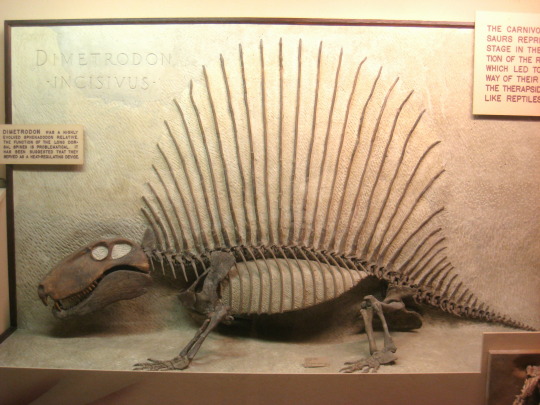

April’s Fossil of the Month - Dimetrodon (Dimetrodon spp.)
Family: Sphenacodon Family (Sphenacodontidae)
Time Period: 295–270 Million Years Ago (Late Permian)
Although the 14-or-so species of stockily-built quadrupedal vertebrates in the genus Dimetrodon are commonly included alongside dinosaurs in popular culture, every member of this genus was already long extinct by the time the first dinosaurs developed (with the most recent known Dimetrodon species, Dimetrodon grandis, disappearing from the fossil record around 270 million years ago, while the earliest known dinosaurs appear some 25 million years later.) The morphology of the skulls of Dimetrodon species (particularly the shape of their temporal fenestrae, a pair of openings behind the eye sockets which housed muscles that operated the jaws in life) suggests that they were actually synapsids - a group of animals containing the mammals and their closest relatives, and while this makes them a “sister-group” to mammals they were still part of a separate group of non-mammalian synapsids with no direct living descendants. While the size of Dimetrodon species varied enormously (ranging from the 60cm/2ft long Dimetrodon teutonis to the 4.6 meter/15 foot long Dimetrodon angelensis, which was among the largest terrestrial animals of its time,) all were alike in possessing a distinctive dorsal “sail” made up of several elongated extensions of their vertebrae, likely with skin running between them. The purpose of this sail has been the subject of extensive debate; it was historically thought to have been used in thermoregulation (with the skin between the vertebral extensions plausibly containing blood vessels, allowing the sail to absorb heat and transport it around the body when exposed to direct sunlight, or to lose heat by flushing the sail with blood to allow it to disperse into the air when in the shade,) but more recently it has been suggested that it may also have served a role in courtship. The name “Dimetrodon” translates roughly to “two measured teeth”, in reference to the fact that, unlike reptiles, members of this genus had two different types of teeth suited to different functions - large canine teeth for gripping and tearing meat, and smaller “shearing” teeth that were likely used to more delicately remove meat from bones. Based on their dentition, it is likely that all Dimetrodon species were carnivores that fed on smaller vertebrates such as amphibians, reptiles and possibly smaller synapsids.
--------------------------------------------------------------------------
Image Sources:
https://commons.wikimedia.org/wiki/File:Dimetrodon_incisivus_Exhibit_Museum_of_Natural_History.JPG and https://commons.wikimedia.org/wiki/File:Dimetrodon_grandis_3D_Model_Reconstruction.png
#dimetrodon#synapsid#synapsids#zoology#biology#paleontology#paleobiology#animal#animals#wildlife#prehistoric wildlife#evolutionary biology#permian wildlife#non-mammalian synapsids#prehistoric animals
164 notes
·
View notes
Text


Part 2 of my dragon dentition series 😊 ancients coming next! Teef info under the cut
Obelisks take inspiration from Chinese guardian lion statues, with their voluminous manes, big paws and fierce face. As such, their teeth would be similar to a lion’s dentition, with massive canines and carnassials. Although lions mainly eat land-based animals, they are also opportunistic and will sometimes eat fish and even insects. This doesn’t make up for any large part of their diet, however, and in this way they differ from Obelisks which only eat seafood and bugs. Jaguars make a better match for Obelisks in regards to food, as they eat aquatic prey more often than lions do, with one remote population of jaguars in Brazil primarily feeding on aquatic reptiles and fish.
Pearlcatchers were pretty tricky to pin down. Their body and face look almost horse or deer-shaped. Their diet is insects and plants. The only creature that came to mind for Pearlcatchers were qilins; one-horned legendary beasts from Chinese mythology. They’re fully scaled, with dragon-like faces and a body shaped like a horse, deer or goat. This seems to fit Pearlcatcher’s the most, but figuring out their dentition is another matter. There’s not really a 1-to-1 comparative animal I can base their teeth on, so I think they’d be a mish-mash of different tooth structures. They’d have larger canines, maybe like a musk deer, but the rest of their teeth would follow a more herbivorous design. They’d have large, flat molars and premolars for grinding up plants, probably similar to a horse or goat.
Ridgebacks are basically land-sharks, no question. Their diet and face says it all. Although their snouts look more like goblin sharks to me, I don’t think they’d have those creepy mouths. Their dentition would be more like a great white; they’d have a mouth full of serrated, razor sharp teeth. Like actual sharks, Ridgeback’s would have a reserve of extra teeth in their jaws.
Skydancer dragons present another tricky situation. They’re bird dragons, and eat plants and insects like Pearlcatchers. Although some official art shows them with teeth, I don’t think they’d actually have them. The closest structure to teeth that's found in birds is the tomia, which is the cutting edge of the upper and lower beak. Tomia is not made of enamel, but of cartilage. Seed-eating birds use this to slice through seed hulls, and birds of prey like falcons have a single sharp projection to rip meat and insects apart. Geese have tomia on their tongues, which pushes the food back towards their throat as they eat. Skydancers probably have a gizzard as well, as the tomia is not enough on its own to grind food down completely. It was hard to figure out what the Skydancer’s beak would be most similar to; out of all the more hook beaked birds, it reminded me most of vultures or eagles, although in diet they do not match them at all. Skydancer beaks are a mish-mash of different bird characteristics that I thought would fit them the most, rather than based on a single bird in particular.
Snappers are tortoise dragons, and like tortoises they’d have ridges in their beaks to help chew food. The official lore states that their beaks are “lined with molars that begin halfway down the jaw and continue all the way to the back”. Real-life tortoises don’t have teeth, so I’d imagine these structures would be like the tomia of birds. Their diet would be a mix of what tortoises and turtles eat, as Snappers eat both plants and seafood.
Spirals really remind me of ferrets, with their noodley bodies and energetic, chaotic nature. Like ferrets, they’d have sharp little canines, incisors and carnassials for shredding meat. Ferrets mainly eat meat, but will also eat bugs too, which matches up with the Spirals diet.
Tundra dragons are currently the only purely herbivorous dragon. The lore states that they have “impressive canine teeth used for combat. The majority of their jaw is set with flat, wide molars, perfect for grinding up scrub.” They’d be most similar to musk deers in dentition, with both male and female Tundras having the enlarged canines characteristic of male musk deer. The canines wouldn’t be as thin or long as a musk deer; they would be thick, robust, and fit more snugly inside the mouth.
Last for the modern breeds, we have the Wildclaws. They’re raptor dragons, based on the Dromaeosaurids - raptor dinosaurs (velociraptors, utahraptors, etc). Like raptors, Wildclaws would have widely spaced and serrated teeth. They’d be fairly equal in shape, and would curve backwards. Raptors were carnivorous, which fits with the Wildclaw’s meat diet.
104 notes
·
View notes